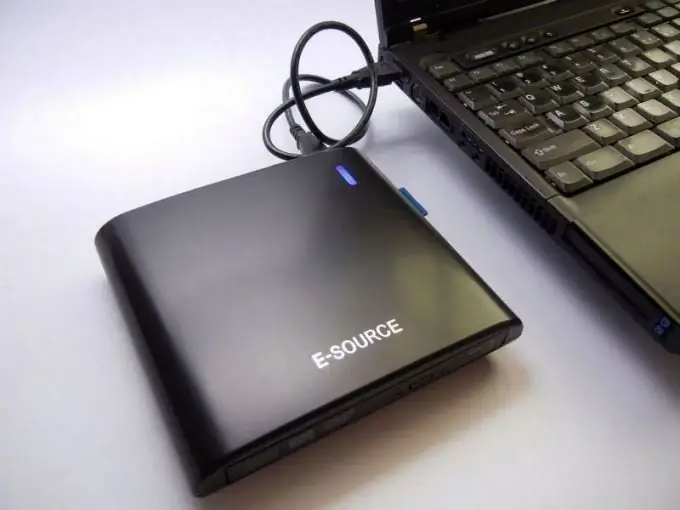The situation when the computer does not detect an external drive is quite common. This may be due to a malfunction of the hard drive itself, or to a computer malfunction or a failure in the operating system. Before contacting the service center, try to independently understand the reasons for what is happening.

Instructions
Step 1
It is possible that the reason lies in a malfunction of the USB controller. Connect your hard drive to a different USB port. It often happens that external media won't start due to lack of power, especially if you are using the connectors on the front panel.
Step 2
Try replacing the cable you are using for the connection. Over time, damage may appear in it, leading to a lack of connection. If there are two connectors for connection, then both must be connected.
Step 3
Sometimes the reason lies in the computer's power supply. If a lot of peripheral devices are involved, then the power to connect an external HDD may not be enough. Disconnect some of the equipment.
Step 4
External media may not be detected in the system due to driver issues. Check if the drive appears in Device Manager. You can open it by running the command "Start" - "Control Panel" - "Device Manager".
Step 5
Click on the line "Disk drives". You will see a list of all hard drives. Right-click on the line with the name of the external HDD and select "Update driver".
Step 6
It is also recommended that you update your USB controller drivers. If the automatic search is not successful, try downloading the driver yourself from the hardware manufacturer's website.
Step 7
It happens that the operating system assigns a drive letter to external media that was previously assigned to the connected drive. Run the command "Control Panel" - "Administrative Tools" - "Computer Management" - "Disk Management".
Step 8
Right-click on the line with the name of the external HDD, from the drop-down menu select "Change drive letter or path to drive". Assign any letter that has not yet been used in the system and click OK.
Step 9
If the system does not detect a new hard drive, it is quite possible that it is not formatted. Open the Disk Management section, right-click on the external drive and select Create Simple Volume.
Step 10
Your computer may have BIOS disabled USB support. In this case, the computer does not see not only the external drive, but also any of the USB devices. You will have to go into the BIOS (you can read how to do this in the instructions for the motherboard) and enable USB support.
Step 11
If none of the above helped, and important information is recorded on the hard drive, then you will have to contact the service center. However, it should be borne in mind that the cost of repairs can be comparable to the cost of a new external drive.






